Barn conversions – a farmer’s experience and advice
Converting a barn into a dwelling using permitted development rights is often far from straight forward, with nearly half of all applications refused. We speak to one farmer who now advises others on how to succeed.
“Never give up,” says William Ashley from his farm office in Hertfordshire.
The mixed sheep and hay farmer knows a thing or two about perseverance.
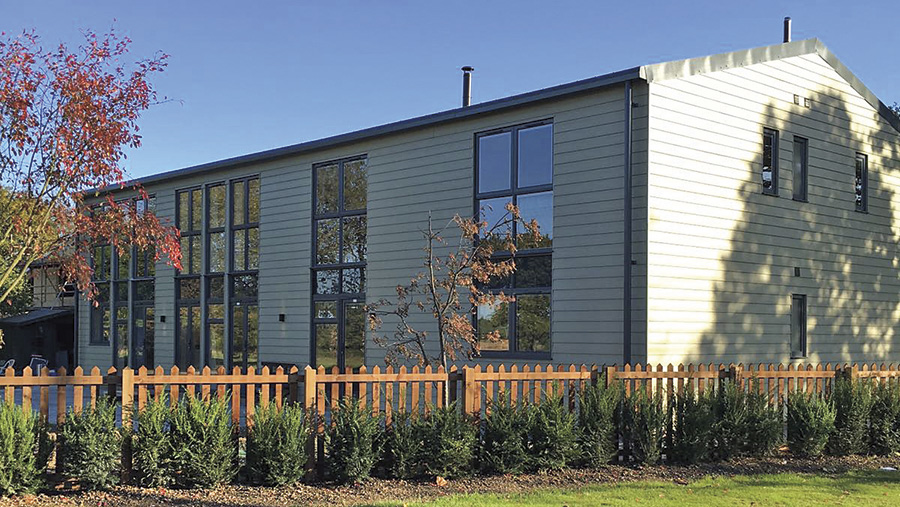
Barn conversions can involve a struggle for permission, so patience is needed
In the past two years he has had three permitted development rights (PDRs) applications refused, fought and won to overturn these on appeal, been through a hearing and helped five other farmers to secure planning permission using PDRs.
He is no stranger to the full planning process either, and over the past 30 years has given many of his old agricultural buildings a new purpose.
Former chicken sheds have been converted into 12 live-work units and are occupied by local business owners, including a travel agent, artist and design engineer.
General purpose barns are rented out to an electrician and a stage performance company, while two houses – a converted barn and a new build – also provide rental income.

The farm’s converted chicken sheds now provide 12 live-work units for local businesses. The works were done using full planning permission
Through these changes Mr Ashley has transformed his 101ha family farm and secured its future.
Rather than a cluster of redundant buildings, Monks Green Farm is now a smart and vibrant space with more than 35 people living and/or working on site.
“We were a small family farm, so for a long time I’ve seen we needed to diversify to survive,” he says.
“We’ve got a bit of a community here now, with the live-work units.”
But it hasn’t all come easily, and the most difficult and frustrating developments have been the more recent ones – the conversion of two barns into three dwellings using permitted development rights (PDRs).
So-called “Class-Q” PDRs were introduced by the government in April 2014 with the aim of making it easier for farmers to convert disused agricultural buildings into dwellings, thereby generating extra income and adding to the much-needed rural housing stock.
See also: Business clinic: Barn conversion – residential or commercial?
The legislation would mean farmers could bypass the full planning application process and submit simple plans, which would be decided on within 56 days.
But 46% of all such applications since then have been refused in England – about 3,000.
That’s despite the government issuing guidelines to local planning authorities (LPAs) this year, following complaint planning officers were not interpreting the legislation correctly.
Mr Ashley’s three applications are counted in those figures.
Barn one application: rural location an issue
Mr Ashley put in his first PDR application in June 2014, soon after the legislation was introduced.
Two general-purpose barns on the farm had fulfilled their agricultural life and were now redundant. The plan submitted was to convert the smaller one into a house and the bigger building into two dwellings.
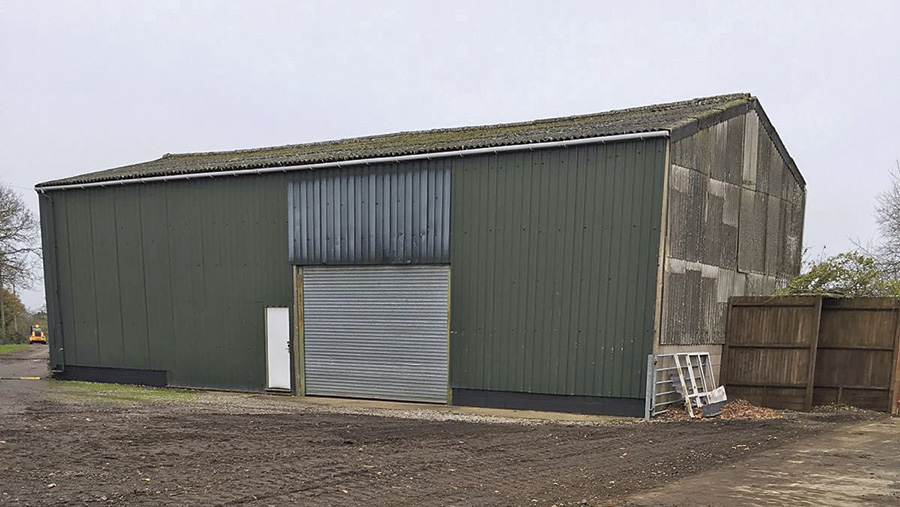
The smaller barn that William Ashley planned to convert into one dwelling
PDR legislation permits the conversion of old agricultural buildings into no more than three dwellings.
But the planning officer refused the application because Mr Ashley had already built or converted two houses on the farm more than 10 years ago using full planning permission.
The application was also refused, as has been common with many refusals, on the grounds that its isolated location would make it “unsustainable” for someone to live there.
See also: Refusals on barn conversions remain stubbornly high
This was despite Monks Green Farm being a 30-minute drive from north London, just over a mile from the village of Brickendon and less than a mile from a bus stop and a railway station with trains to the capital.
This meant he could only create one more dwelling, said the LPA.
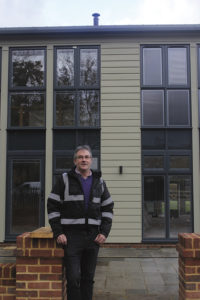
William Ashley standing outside his completed barn conversion
An appeal and hearing upheld the council’s decision on the issue of the number of dwellings, but made no decision about isolation.
So Mr Ashley put in a second application, this time for just the smaller barn, which would create one dwelling.
In the meantime, the government issued guidance to LPAs which clarified that the three dwellings allowed under PDRs Class Q did not include dwellings built or converted under full planning permission.
This meant Mr Ashley’s second application was not refused on the number of dwellings.
However, since the planning inspector for the appeal had failed to come to a decision on isolation, the application was refused on those grounds again.
Again, Mr Ashley appealed.
“The inspector came on a Tuesday and gave us a decision on the Thursday,” he remembers, to grant the application permission.
He was also awarded £2,500 for his time and costs incurred going to appeal, although he says he had a battle with the council to prove his expenses.
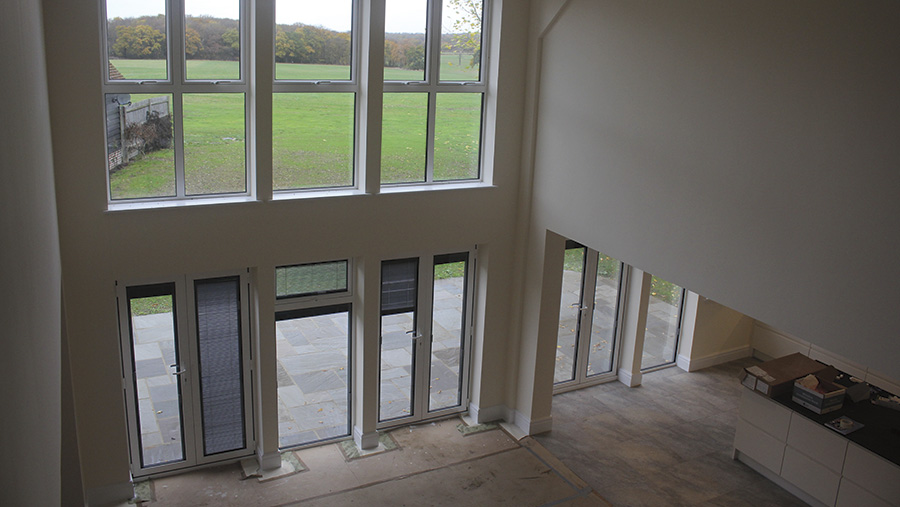
The converted building makes good use of tall ceilings
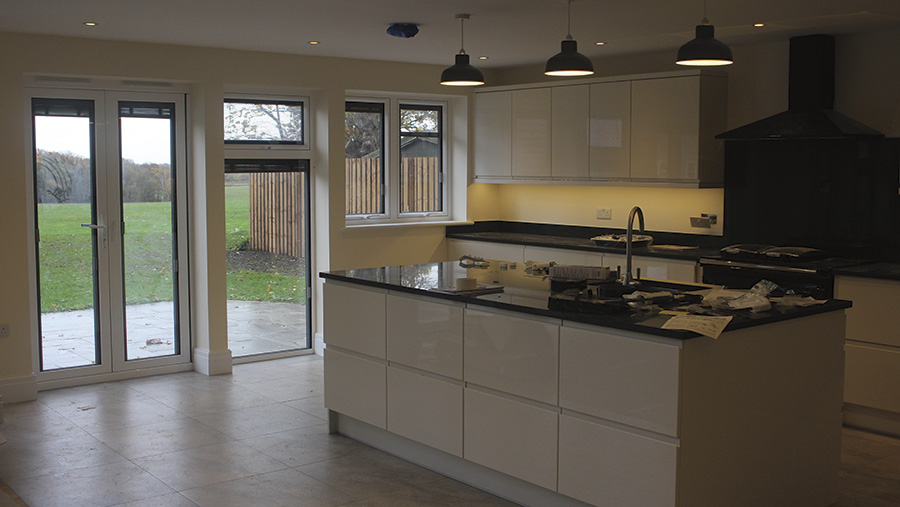
The conversion provides a modern open-plan living area and kitchen
This barn conversion is now complete, with big open-plan spaces, tall ceilings, modern kitchen and a view across the farm’s fields. A family will rent it and is in the process of moving in.
But it had taken 16 months for the PDR to be granted.
Barn two application: removing a lean-to
Far from put off though, Mr Ashley put in another application for the second barn to be converted into two dwellings.
Again, it was refused. This time the planning officer decided removing the building’s lean-to exercised his PDRs and therefore it didn’t qualify for Class Q.
This was despite a lean-to being removed in the conversion of the first barn, without it being a problem.
For the third time, Mr Ashley went to appeal. And again the inspector overturned the planning officer’s decision and Mr Ashley was awarded £2,500 of costs.
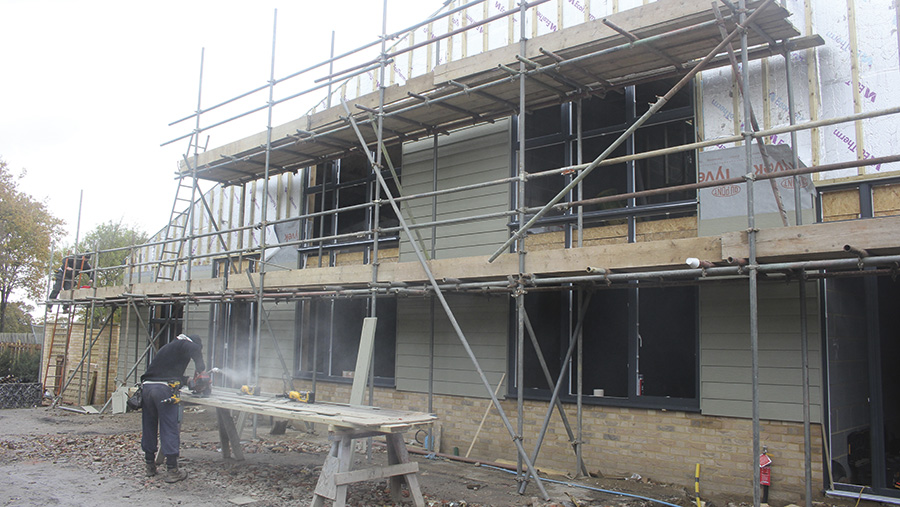
The conversion process can take longer than expected
Now the builders are on site and busily converting the remaining barn.
Persevere
“The designs of the buildings are exactly the same as when we first put them in,” says Mr Ashley, “but it has taken over two years instead of 56 days.”
“You can understand why many farmers give up – because of the time and cost. [LPAs] always start with a ‘no’ – they should start [by asking] how can we grant this?”
Now Mr Ashley provides a planning service to other farmers, imparting the knowledge he has picked up along the way and through following of the twists and turns in legislation.
See also: Business Clinic: Can I challenge barn conversion refusal?
“We want to right a wrong,” says Mr Ashley.
“We’ve done seven applications for other farmers.”
Among those he has helped get through on appeal is a neighbour’s application that was also turned down on sustainability grounds, even though Mr Ashley says a development of 80 houses had been built next to the site.
On appeal, it was turned down because the farmer had applied to change its use to storage in 1993 – which he then didn’t use.
What the council failed to say, was that a PDR for converting a storage building into a dwelling exists and is called Class P. An application is now in under this PDR.
See also: Cuts to council budgets delay farm planning decisions
In total, the costs awarded to Mr Ashley as well as the farmers he has helped, amount to about £10,000 he estimates.
“Its been a real learning curve,” he says.
“Most people think the planning system is expensive and bureaucratic, and it is, but there are ways through it.”
“We probably couldn’t have stayed here, [if we hadn’t diversified with conversions].
“If a building falls down, you fall down – you’ve got to do as much as you can to diversify.
“Never give up!”
Mr Ashley’s top tips for PDR application success
- The 56-day decision deadline can be something of a myth – be prepared for your project to take longer
- Know your rights – permitted development rights are permitted, providing you meet the criteria. It is not meant to be a full planning application
- Be prepared for your application to be turned down, as this is common. Do not lose heart – consider going to appeal as planning inspectors (as opposed to officers) can be very reasonable.
- If you get a refusal, read the decision report carefully. It sounds obvious but make sure you understand the reason or reasons your application was refused. They may be good ones, so don’t assume you are right.
- Appeals are not as complicated as you may think, but keep an eye on your costs and time. If the local planning authority is unreasonable, apply for your costs to be covered. Keep an account of all that you do because the authority will question this – and rightly so as its taxpayers’ money.
- Look out for other similar applications, particularly in your area. You can use successful ones as evidence.
- The key to winning appeals is to be confident. Planning officers, or rather local authorities, don’t always make the correct decisions, otherwise there wouldn’t be as many successful appeals as there are.
- Keep abreast of changes that are introduced by the government and the work that groups such as the CLA and NFU are doing. The information may help you argue your case.
- With success comes cost – once you’ve got through the system be proud of what you have achieved but keep an eye on those extra costs. Seeing your old barn turn into a beautiful home, it’s easy to forget how much those finishes touches mount up.
- Keep your bank manager updated and invite him/her on site. Mine has been supportive from start to finish.
- Never give up. I get up every morning and see what we have achieved, it’s been worth it.
